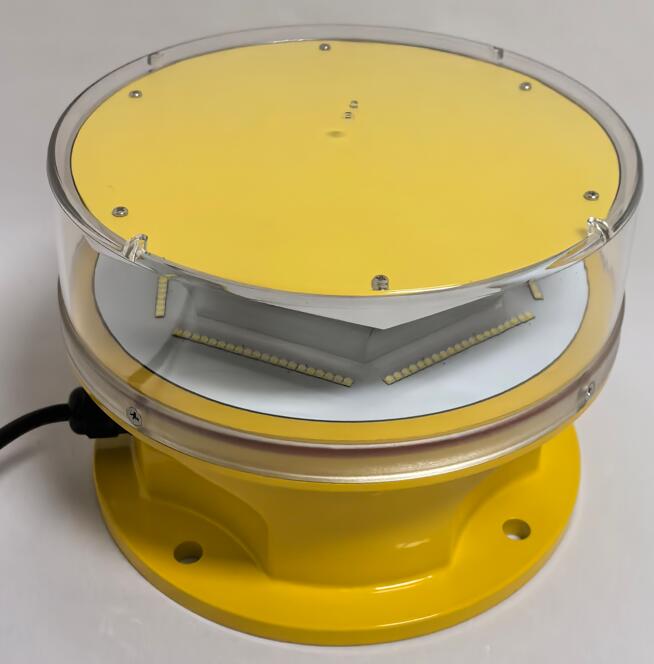Obstruction Lights Aviation: Guardians of the Night Skies
In the complex world of aviation safety, obstruction lights aviation systems play a critical yet often overlooked role. These specialized lighting systems mark tall structures—from skyscrapers to wind turbines—ensuring they remain visible to pilots, particularly during low-visibility conditions. As air traffic increases and urban landscapes grow denser, the importance of effective obstruction lights aviation solutions becomes ever more apparent. This article explores their function, regulations, technological advancements, and their indispensable role in modern aviation safety.
The Purpose of Obstruction Lights in Aviation
The primary function of obstruction lights aviation systems is to enhance the visibility of tall structures that could pose collision risks to aircraft. These lights serve as both daytime and nighttime visual warnings, helping pilots identify and avoid obstacles during all phases of flight.
Key Objectives:
Collision Prevention: Minimize the risk of aircraft striking structures.

Regulatory Compliance: Meet international and national aviation safety standards.
| obstruction lights aviation |
Enhanced Situational Awareness: Assist pilots in navigation, especially in poor weather or at night.
Types of Obstruction Lights
Different structures require different lighting configurations based on height, location, and potential risk to air traffic. The most common types include:
1. Low-Intensity Obstruction Lights (L-810)
Used for structures under 45 meters (148 feet).
Typically steady-burning red lights.
| obstruction lights aviation |
Common on small buildings, cranes, and telecom towers.
2. Medium-Intensity Obstruction Lights (L-864/L-865)
For structures between 45 and 150 meters (492 feet).
Can be flashing or steady red/white lights.
Often installed on taller buildings and power lines.
3. High-Intensity Obstruction Lights (L-856/L-857)
Required for structures exceeding 150 meters.
Bright white strobe lights for maximum visibility.
Used on skyscrapers, wind farms, and major broadcast towers.
4. Dual Lighting Systems
Combine red beacons for nighttime and white strobes for daytime.
Ensures visibility under all lighting conditions.
Regulations and Standards
To maintain global aviation safety, organizations such as the International Civil Aviation Organization (ICAO) and the Federal Aviation Administration (FAA) have strict guidelines for obstruction lights aviation systems.
Key Standards:
ICAO Annex 14: Defines lighting requirements for obstacles near airports.
FAA AC 70/7460-1L: Specifies lighting configurations based on structure height and location.
European Aviation Safety Agency (EASA): Harmonizes regulations across EU member states.
Non-compliance can lead to penalties and increased accident risks, making proper installation and maintenance essential.
Technological Advancements in Obstruction Lighting
Modern obstruction lights aviation systems have evolved significantly, incorporating new technologies to improve efficiency and reliability.
1. LED Lighting
Longer lifespan and lower energy consumption than traditional incandescent bulbs.
Brighter and more consistent illumination.
2. Solar-Powered Systems
Ideal for remote locations without reliable power sources.
Reduce environmental impact and operational costs.
3. Smart Monitoring Systems
Remote diagnostics to detect failures in real-time.
Automated alerts for maintenance teams.
4. Adaptive Lighting Systems
Adjust brightness based on ambient light conditions.
Reduce light pollution while maintaining safety.
Challenges and Solutions
Despite their importance, obstruction lights aviation systems face several challenges:
1. Light Pollution
Excessive brightness can disrupt wildlife and nearby communities.
Solution: Use shielded fixtures and adaptive lighting controls.
2. Maintenance Difficulties
High structures require specialized equipment for inspections.
Solution: Drones and remote monitoring reduce manual checks.
3. Weather-Related Failures
Ice, storms, and extreme temperatures can damage lights.
Solution: Robust, weather-resistant designs with heating elements.
Future Trends in Obstruction Lighting
As aviation and infrastructure continue to evolve, obstruction lights aviation systems will see further innovations:
1. Integration with Urban Air Mobility (UAM)
Drones and air taxis will require more precise obstacle lighting.
Dynamic lighting systems may adjust based on real-time air traffic.
2. Enhanced Automation
AI-driven predictive maintenance to prevent failures.
Synchronized lighting networks for large-scale structures.
3. Sustainable Solutions
Increased use of solar and energy-efficient LEDs.
Eco-friendly materials in manufacturing.
Obstruction lights aviation systems are a vital yet often unseen component of aviation safety. From towering skyscrapers to remote wind farms, these lights ensure that pilots can navigate safely, day or night. With advancements in LED technology, smart monitoring, and sustainable power solutions, the future of obstruction lighting promises even greater reliability and efficiency. As airspace becomes more crowded, the role of these systems will only grow, reinforcing their status as the silent guardians of the skies.
